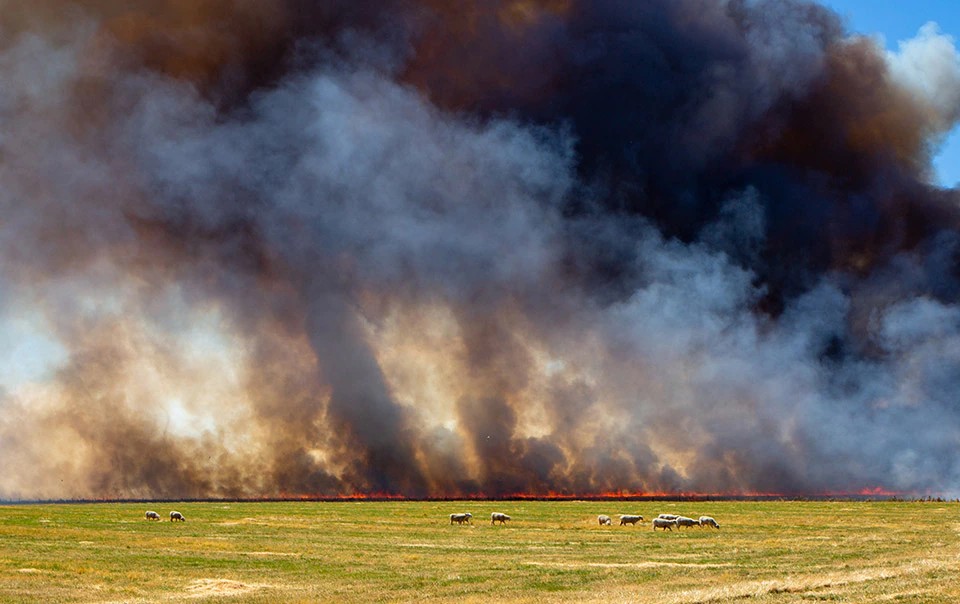Continuity Planning for Agribusinesses


Business continuity planning is critical for farms and ranches, which can face risks ranging from severe weather events to supply chain disruptions. Building an effective business continuity plan can help agribusinesses prevent long-term loss of income, protect employee safety and get back to business sooner after a disruption.
Even if your business isn’t directly impacted by a storm or other significant natural event, you could still be affected and in need of a continuity plan. Risks include supply chain disruption, such as if your suppliers or distributors are impacted by an event and can’t supply the products you need for production. Your continuity plan can include contingency suppliers and backup plans for equipment, gas, food and shelter for animals, fuel, packaging materials and other business-critical items.
Here are some steps to developing an agribusiness continuity plan:
1. Identify threats or risks
Business continuity plans are not one size fits all. The most effective continuity plans will identify the specific risks facing your farm, ranch or vineyard. You need to consider and assess all areas of risk that have the potential to cause a business disruption based on historical, geographical, organizational and other factors.
“Every business has choke points or critical control points that could potentially fail,” said Scott Humphrey, a Travelers Risk Control professional. “Does your agriculture business have contingency plans in place to handle them?”
- Identifying, exploring and planning for these threat scenarios can help to make your business more resilient and better prepared to handle these risks.
- Weigh the probability of each event against its potential impact to your business, along with your readiness to respond.
- Consider if you have the right insurance coverage for your business and a contractual risk transfer program in place. This is especially important for agribusinesses that hire third parties to perform work on their farms and ranches, such as seasonal hired labor for harvesting or activities that bring the public onto the premises.

Every business has choke points or critical control points that could potentially fail. Does your agriculture business have contingency plans in place to handle them?
Scott Humphrey
a Travelers Risk Control professional
2. Conduct a business impact analysis
Identify the employees, facilities, equipment and programs critical to the survival of your business. What functions and processes, if interrupted or lost, could impact your ability to get your crops or livestock to market? Consider who and what is necessary to restore critical operations. Then, you can prioritize the need to restore each item after the event.
- A business continuity plan that identifies alternative resources that can aid in production and distribution can be an invaluable resource as you get back online after an unexpected event.
- It’s more than just equipment and facilities that can be in short supply. Agriculture businesses also need field workers to harvest and employees who are trained to run increasingly technical equipment.
- Make sure the other facilities and people included in your continuity plan are aware of the plan in advance and able to activate it.
- It is common to have “handshake agreements” on various aspects of the farming operation with neighboring farms, such as where farmers who each have nut processing facilities agree to each process the other’s crop in the event that one loses use of their processing facility. However, a more formal written agreement can help to strengthen these agreements and give peace of mind.
3. Adopt controls for prevention and mitigation
Instituting a business continuity plan can help your business identify, prepare for and recover from an unexpected event, but it can also help reduce the impact of an event.
- Prevention and mitigation planning activities can help identify and remedy conditions that could lead to a fire or explosion from unsafe storage of fertilizer, for example. They can also include moving critical equipment to higher elevation in flood-susceptible areas.
- Ensure your business continuity plan addresses emergency response, public relations, resource management and employee communications.
- After a storm or other incident, you’ll want to make sure you check on employees that may have been affected as well.
4. Test, exercise and improve your continuity plan regularly
As your agriculture business evolves and new risks emerge, your business continuity plan should be updated to keep pace with those changes. Test and update it regularly, at least once a year and any time critical functions, facilities, suppliers or employees change. Train employees to understand their roles and responsibilities in the plan as well.
- Advances in technology are revolutionizing farming. Update your agribusiness continuity plan to include potential new technology that might not have existed when your plan was originally created, such as mobile milking stations that can be brought in when other equipment is offline.
- It’s also important to be aware that newer technology presents new risks that should be accounted for in your plan.
- Consider conducting hypothetical walk-throughs of different disruption scenarios, simulations and discussions with employees. A well-thought-through plan can help your agribusiness get back up and running after an event.



